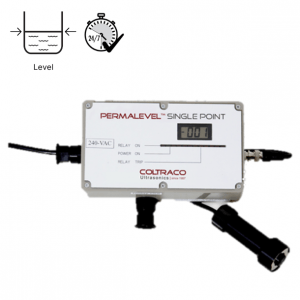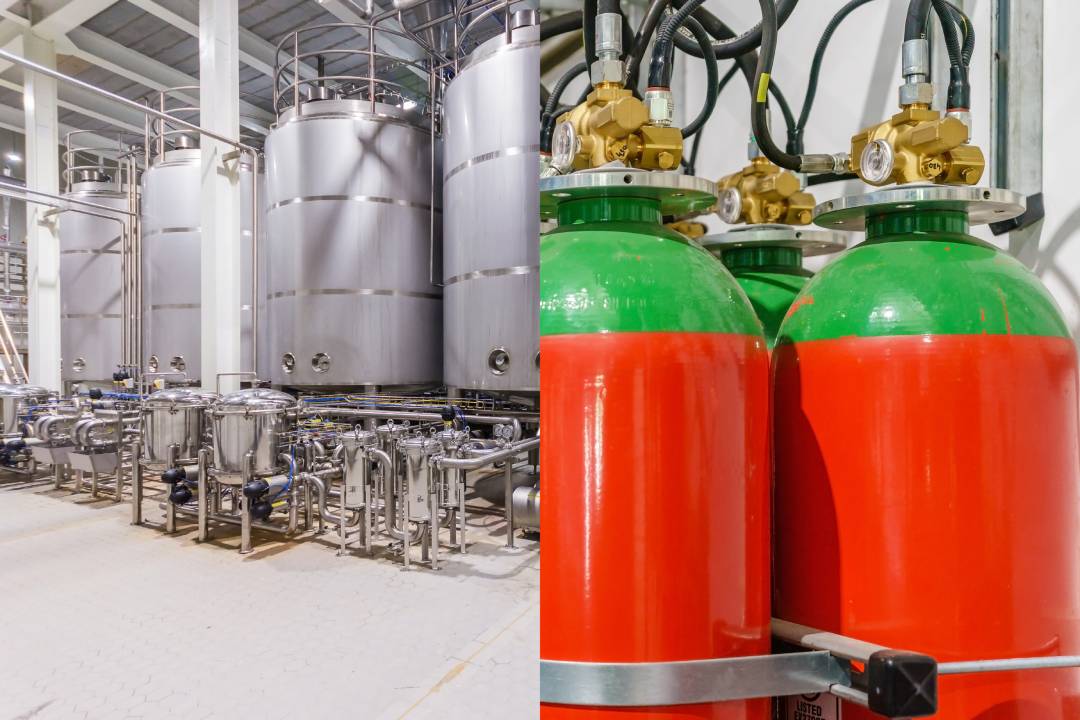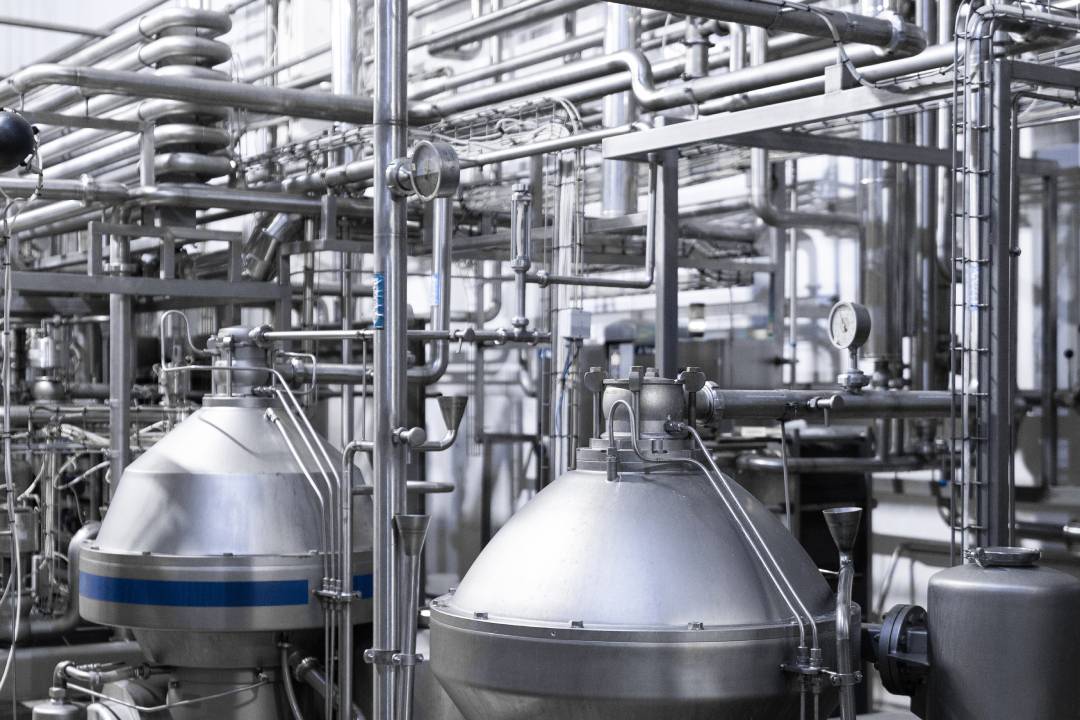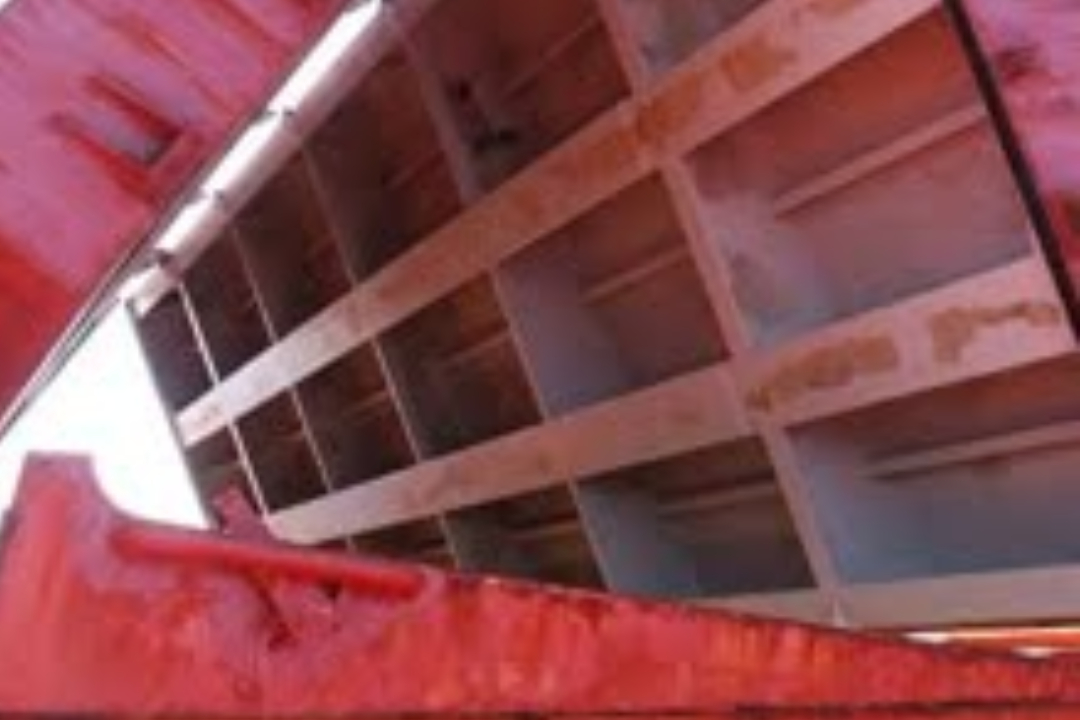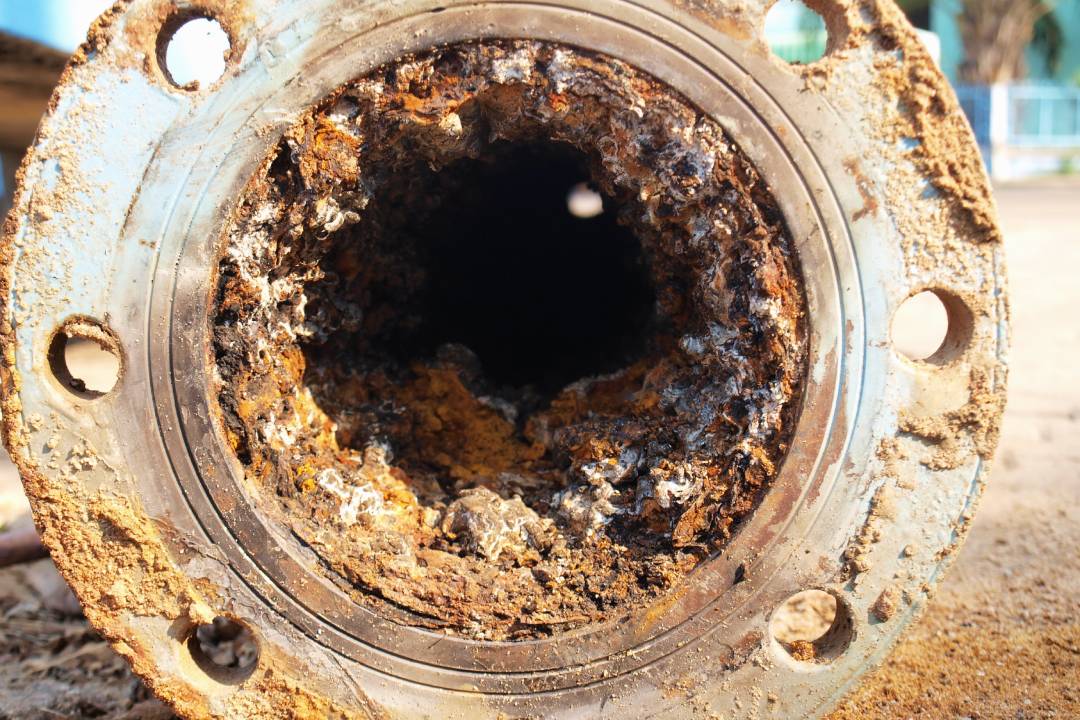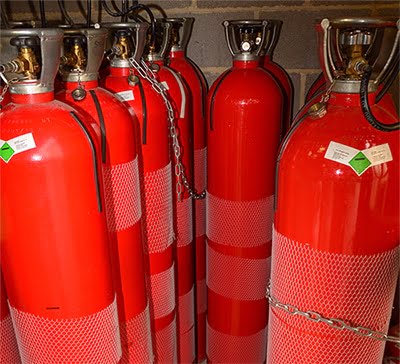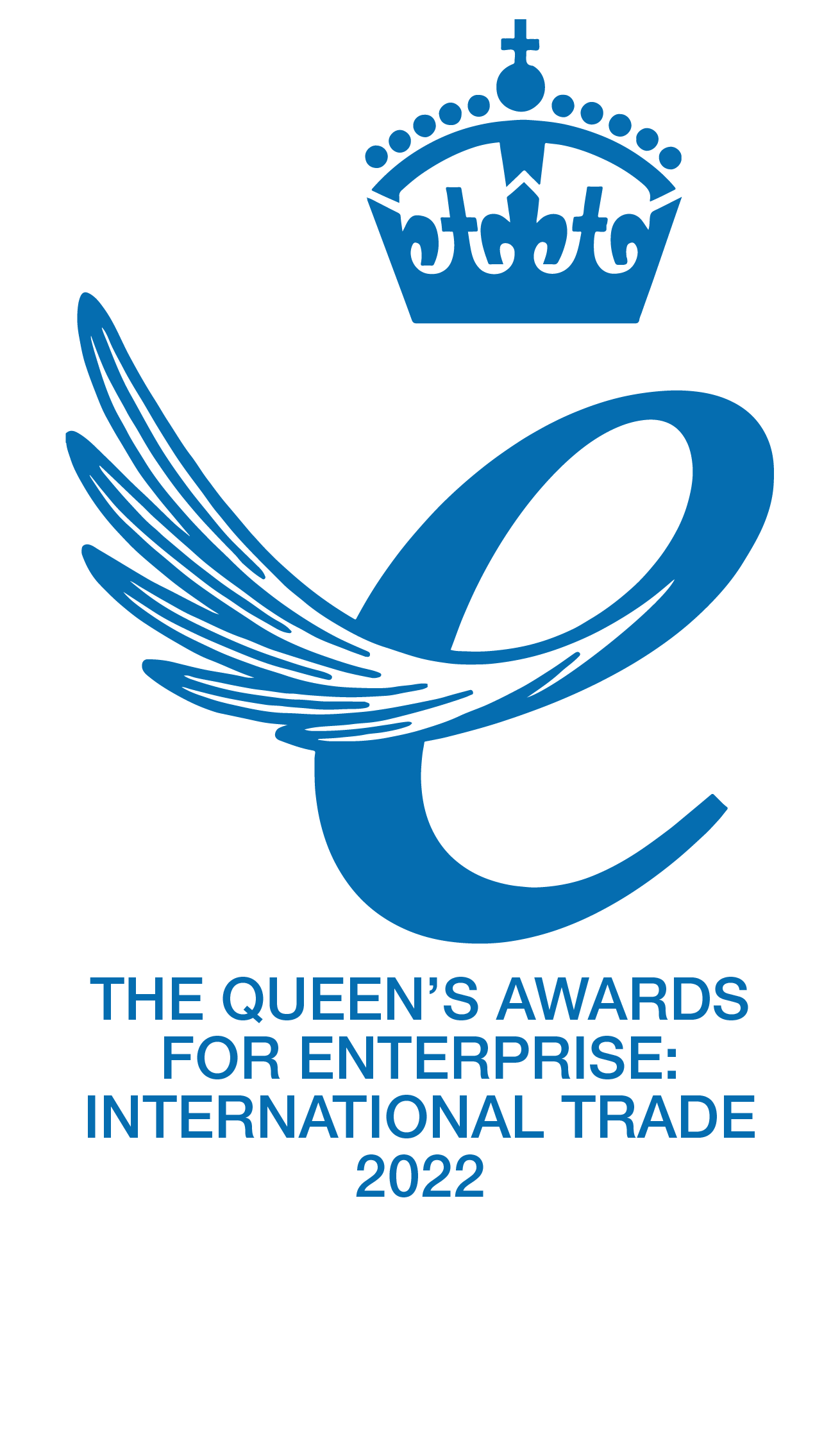Using continuous monitoring technology to check the contents of your fire suppression cylinders is non-invasive, non-destructive and non-disruptive meaning it is safer for personnel and does not require the user to shut down the fire suppression system during inspection. Constant monitoring systems offer round-the-clock peace of mind knowing your systems are fully operational and accurately monitored during and between maintenance periods.
Continuous contents monitoring means that testing is taking place when the fire suppression cylinders are in-situ and operational without user involvement. These systems alert the user when a leak is occurring before the contents have depleted beyond the operational capacity, allowing you to schedule maintenance and reducing unplanned shutdown periods.
Cheaper: Enabling inspection to take place without disruption to your cylinder installation means no shut-down, saving time and no requirement for multiple operators, saving labour costs. We have a large range of constant level and weight monitoring technology allowing us to be competitive with pricing and Coltraco Ultrasonics have a “Price Promise” to be the most competitive on the market.
Constant Monitoring
A continuous monitoring system is capable of detecting when a fire suppression cylinder has leaked, or is leaking before the design capacity has been compromised or a catastrophic discharge event occurs. Constant monitoring forms a vital part of a fire safety plan in any installation. Cylinder agent leakage can cause an entire fire suppression system to malfunction, and if undetected could result in an ineffective release of agent that may fail to extinguish a fire. A catastrophic leakage event that dispels the entire contents of a cylinder is immediately apparent; however, slow leakage over time is very hard to detect. Slow leakage resulting in a 10% decrease in CO2 agent mass requires complete replacement of the system and 5% if using clean agents or Inert gas systems. Therefore, it is imperative to be aware of slow leakage to allow maintenance to take place before a failure occurs.
Therefore, constant monitoring falls within the preventive, or proactive maintenance category, because it provides the ability to plan and schedule maintenance or replacement of faulty systems before they become unsafe or incapable of operating effectively. The definition of an “effective” system is determined by regulatory standards which dictate what condition, or under what circumstances a system is in a safe condition. Regulations are in place to guide the industry to follow protocols that save lives. At Coltraco, we provide safety equipment for safety’s sake and our technology is guided by industry standards and by regulations to keep people and assets safe. Our constant monitoring systems work on multiple agent types and therefore, are required to meet different regulations depending on which agent is being monitored.
Regulations state that a leakage greater than 5% for clean agents and Inergen blends, and 10% for CO2 requires cylinder refilling or replacement. Therefore, all of our monitoring systems allow the user to configure the equipment to trigger at either 5% or 10% threshold depending on which agent is being monitored. If the agent leaks past the pre-selected threshold, the unit, if connected to an external alarm will alert the user that there has been a critical leak in the fire suppression system.
Going beyond standard compliance
Coltraco Ultrasonics provides continuous monitoring of the liquefied and non-liquified gaseous extinguishing systems used in all sectors, going above and beyond existing standards. Most of the fire protection measures stated in regulatory standards state that systems should be regularly inspected, maintained, and tested. Some of these areas are passive fire-rated compartment barriers and structural components of buildings, including the seals of barrier penetrations, supply and distribution pipes, and liquefied and non-liquified gaseous fire suppression extinguishing systems including dry powder systems.
High-Pressure cylinders are, in general, more susceptible to leakage than low-pressure systems. Increasing the design pressure of a cylinder or an increase due to a temperature rise will increase the chance of leakage; typically, through one of the weak points – such as the valves and pressure gauges. Therefore, it is vital that high-pressure cylinders are monitored for contents loss, and it is reasonable to suggest that as the pressure increases, so does the importance of monitoring them continuously.
This is why the major fire OEMs are constantly monitoring their own gaseous systems, whether with float gauges or valves that monitor the pressure. But neither of these methods can be retrofitted, and they still require external means to ensure that they are working. This is why Coltraco Ultrasonics design accurate and reliable constant monitoring systems. These systems combine the ease of retrofitting into already installed fire suppression cylinder systems with the highest accuracy of constant monitoring, capable of detecting incremental and major contents loss of both liquefied and non-liquefied systems.
Accidental shock discharge, resulting in far more than the regulated threshold of 5% or 10% loss of agent mass and the resulting pressure loss can be missed for long periods between planned maintenance checks. The ISO regulations only require pressure to be tested once every six months. A fast leak, or indeed a slower leak occurring shortly after a scheduled maintenance check, could lead to an unsafe environment, where any fire would almost certainly fail to be extinguished if the design capacity of the cylinders is compromised due to a leak. This could potentially go unaddressed for months.
Continuously monitoring agent mass
Monitoring agent mass is the most fundamental way of assessing content loss. Mass, like pressure, is a direct measure of the quantity of a fixed volume of gas, however, mass is a superior metric as it cannot be affected by external factors, like temperature; a cylinder system’s mass will if there is a loss of the agent from the cylinder.
The mass of the agent is entirely independent of temperature. A change in mass will always correspond to a change in the cylinder contents. This is not the case for pressure, as the internal pressure of a cylinder depends on its temperature. Pressure values must, therefore, take temperature into account, adding another potential source of error. In addition, service personnel often fail to take temperature into account at all.
Typical pressure gauges more commonly seen on fire suppression cylinders can be unreliable; they also are limited in their accuracy as they use an analogue scale. For a 20 MPa (200 bar) cylinder, the typical accuracy of gauges is limited to 2.5% of the fill pressure. The potential for human error compounds this in reading any analogue scale; two people reading the same analogue scale could report slightly different values. In contrast, a digital scale, as used with the Permalevel® Featherweight will give the numerical value of agent weight as accurately and precisely as it is capable of doing.
This accuracy can be achieved for all fire suppression agents including high-pressure Inergen/inert gas systems. Inergen is one of the most common inert gas fire extinguishing agents, and it comes in three common blends, IG541, IG-55 and IG-01. The vast majority of Inergen systems use one of eight types of cylinders. <1% accuracy can be achieved for all Inergen blends in any of the standard cylinders, (in many cases, even <0.5%) by using digital monitoring of weight.
Continuously monitoring liquid level
By continuously monitoring the liquid level inside fire suppression cylinders using ultrasound technology, a user can be alerted if the level decreases beyond the regulatory threshold for the type of fire suppression agent being monitored. Coltraco Ultrasonics design instrumentation and systems that operate 24/7 providing peace of mind that safety-critical fire suppression systems are operational and contain the required design capacity needed to effectively extinguish a fire if required.
All of Coltraco Ultrasonics’ technology is non-invasive, and the liquid level monitoring systems are the least disruptive being able to monitor the contents externally using magnetically mounted sensors. Continuous liquid level monitoring is a simple, yet effective way to get 24/7 accurate and reliable information about the condition of safety-critical fire suppression systems.
Ultrasonic Level Sensor System Frequently Asked Questions
What is an ultrasonic level sensor?
An ultrasonic level sensor is a device that utilizes ultrasonic waves to measure the level of liquids or solids in a container or tank. It emits ultrasonic pulses and calculates the time it takes for the pulses to echo back from the material’s surface. This information is used to determine the level of the substance.
How accurate is ultrasonic level measurement?
Ultrasonic level measurement can provide high levels of accuracy, typically ranging from a few millimetres to a few centimetres, depending on the specific sensor and environmental conditions. Advanced ultrasonic-level sensors with sophisticated algorithms and signal processing techniques can achieve even greater accuracy, enabling precise level monitoring and control.
How accurate are ultrasonic-level transmitters?
Ultrasonic level transmitters, which are a type of ultrasonic level sensor, can offer excellent accuracy in level measurement. The accuracy of ultrasonic-level transmitters can vary depending on the model and manufacturer. However, modern ultrasonic-level transmitters often provide accuracy within a few millimetres or a small percentage of the measured range.
What are the advantages of ultrasonic-level sensors?
Ultrasonic-level sensors offer several advantages. They are non-contact, meaning they do not require physical contact with the measured substance, minimizing the risk of contamination or damage to the sensor. They are suitable for a wide range of liquids and solids, including corrosive or hazardous materials. Ultrasonic-level sensors are also relatively easy to install, require minimal maintenance, and can provide continuous or point-level measurements with high accuracy.
How far can an ultrasonic sensor detect?
The detection range of an ultrasonic sensor depends on its specifications and design. Typically, ultrasonic sensors can detect objects or measure distances ranging from a few centimetres to several meters. However, the effective range may be influenced by factors such as the sensor’s power, sensitivity, environmental conditions, and the reflectivity of the target surface.
What is the lifespan of an ultrasonic sensor?
The lifespan of an ultrasonic sensor can vary depending on various factors, including the quality of the sensor, usage conditions, and maintenance. Generally, well-maintained ultrasonic sensors can last for several years. Regular cleaning, protection from extreme temperatures or physical damage, and adherence to the manufacturer’s guidelines can help maximize the sensor’s lifespan.
How many volts do ultrasonic sensors need to operate?
The voltage requirement for ultrasonic sensors can vary depending on the specific model and design. Common ultrasonic sensors operate on voltage ranges between 5 to 24 volts. However, it is crucial to consult the sensor’s datasheet or product specifications to determine the precise voltage requirement for the particular sensor being used.
How do you calibrate an ultrasonic sensor?
Calibrating an ultrasonic sensor typically involves setting the sensor’s output to correspond accurately to the measured distance or level. Calibration methods can vary depending on the sensor’s design and the manufacturer’s instructions. In general, it may involve adjusting calibration parameters or using known reference distances/levels to align the sensor’s measurements with the actual values.
Where do you put an ultrasonic sensor?
The placement of an ultrasonic sensor depends on the specific application and the object or substance being measured. In general, the sensor should be positioned in a location that allows unobstructed ultrasonic wave propagation and provides a clear line of sight to the target surface. Factors such as mounting height, orientation, and avoiding sources of interference or acoustic reflections should be considered for optimal sensor placement.
What are the four major different types of ultrasonic sensors currently in use?
The four major types of ultrasonic sensors currently in use are time-of-flight sensors, continuous wave sensors, Doppler sensors, and phased array sensors.
Time-of-flight sensors measure the time it takes for ultrasonic waves to travel to and from the target object to determine the distance or level.
Continuous wave sensors emit a continuous ultrasonic wave and measure the frequency shift of the reflected wave to calculate the object’s velocity or motion.
Doppler sensors utilize the Doppler effect to measure changes in frequency caused by the motion of the target object, allowing for velocity and flow rate measurements.
Phased array sensors use an array of small ultrasonic transducers to create and control focused beams of sound, enabling precise and customizable inspections in various materials and geometries.
What is the difference between ultrasound and an ultrasonic sensor?
Ultrasound refers to sound waves with frequencies higher than the upper limit of human hearing (typically above 20,000 Hz). Ultrasonic sensors, on the other hand, are devices that generate and detect ultrasonic waves for various applications such as distance measurement, object detection, and level sensing. Ultrasonic sensors utilize ultrasound technology to emit and receive sound waves, allowing for measurement and analysis.
Does an ultrasonic sensor work at night?
Yes, ultrasonic sensors can work at night or in low-light conditions. Ultrasonic sensors operate based on sound waves rather than relying on light waves, making them independent of lighting conditions. They emit ultrasonic pulses and detect the echoes, allowing them to detect objects or measure distances regardless of the ambient light level.
Can an ultrasonic sensor penetrate walls?
No, ultrasonic sensors cannot penetrate solid walls. Ultrasonic waves are typically reflected or absorbed when encountering solid objects, including walls. Ultrasonic sensors are designed for non-contact measurements and are primarily used for detecting or measuring objects within their line of sight, rather than through barriers like walls.
Can an ultrasonic sensor see through walls?
No, ultrasonic sensors cannot see through walls. Ultrasonic waves are affected by solid objects and are primarily used for proximity sensing or distance measurement by analyzing the echoes of the emitted waves. To detect objects or measure distances on the other side of a wall, alternative technologies like radar or specialized imaging techniques would be more appropriate.
Does an ultrasonic sensor need a battery?
The power source for an ultrasonic sensor can vary depending on the specific model and design. While some ultrasonic sensors may be powered by batteries, many are designed to be powered by an external power supply, such as a DC power source or the electrical system of the device or system they are integrated into. It is important to refer to the sensor’s specifications or product documentation to determine the appropriate power source required.
Does dust affect ultrasonic sensors?
Yes, dust can affect the performance of ultrasonic sensors. Dust particles in the air can scatter and absorb ultrasonic waves, which can reduce the accuracy and range of the sensor’s measurements. Additionally, a buildup of dust on the sensor’s surface can impact its ability to emit and receive ultrasonic waves properly. Regular cleaning and maintenance of the sensor can help mitigate the effects of dust and ensure optimal performance.
Why is LiDAR better than an ultrasonic sensor?
LiDAR (Light Detection and Ranging) and ultrasonic sensors have different strengths and applications. LiDAR sensors use laser light to measure distances and create detailed 3D maps of the environment. They offer high accuracy, and long-range detection, and are effective in complex scenarios. Ultrasonic sensors, on the other hand, are cost-effective, non-contact, and suitable for proximity sensing and object detection in closer ranges. LiDAR excels in applications that require precise spatial mappings, such as autonomous vehicles and advanced robotics, while ultrasonic sensors are often used for simpler proximity sensing tasks.
Is an ultrasonic sensor analogue or digital?
Ultrasonic sensors can be found in both analogue and digital versions. Analogue ultrasonic sensors provide continuous output signals that vary in voltage or current proportional to the measured distance or level. Digital ultrasonic sensors, on the other hand, provide discrete output signals, typically in the form of binary values (high or low), indicating the presence or absence of an object within a defined range. The choice between analogue and digital ultrasonic sensors depends on the specific application and the requirements of the system they are integrated into.


